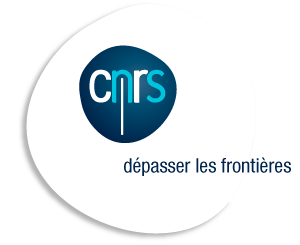Editors - David M. Christie, Charles R. Fisher, Sang-Mook Lee, and Sharon Givens
Preface
The creation of new oceanic crust at divergent tectonic plate boundaries, most commonly known as mid-ocean ridges, has been a focus of intensive multi-disciplinary scientific study for many years. Paradoxically, new oceanic crust is also created, albeit in smaller amounts, as an adjunct to the destruction of old oceanic crust by subduction at oceanic convergent plate boundaries. This type of crustal creation occurs in narrow extensional back-arc basins that parallel oceanic island arcs on the side away from the subducting plate. Back-arc basin crust is created along spreading centers that closely resemble mid-ocean ridges in their form and function.
Back-arc basin spreading centers differ from mid-ocean ridges in important ways that are related to their different regional setting. They are typically close to islands, and therefore experience a more intensive human presence. Many of the island nations of the western Pacific include back-arc basins in their Exclusive Economic Zones and stand to benefit from development of their resource potential. From a strictly scientific standpoint, back-arc magma systems are geologically diverse, and the associated hydrothermal systems can be expected to support an extensive, diverse macro- and microfauna. These systems provide a natural laboratory for multi-disciplinary studies of seafloor creation, of the associated flow of material and energy from the deep Earth, and of the complex ecosystems that this flow sustains.
This volume examines the geological, biological, chemical, and physical interactions that take place along back-arc basin spreading centers. The book derives from the Ridge 2000-InterRidge Theoretical Institute, “Interactions among Physical, Chemical, Biological, and Geological Processes in Backarc Spreading Systems,” held on Jeju Island, South Korea, in May 2004. The success of the conference was due in large part to the generosity of our Korean hosts, including the following individuals and institutions: School of Earth and Environmental Sciences (SEES) at Seoul National University (SNU); Research Institute of Oceanography at SNU; Korea Science and Engineering Foundation (KOSEF); Korea Ocean Research and Development Institute (KORDI); Korea Institute of Geoscience and Mineral Resources (KIGAM); Professors Kuh Kim and Duck Keun Choi at SNU; Professor Sung-Tack Kwon at Yonsei University; and Professor Young Kwan Sohn at Gyeongsang National University. A group of graduate student volunteers from SNU, led by Sung-Hyun Park, provided invaluable assistance throughout the meeting.
Finally, we wish to thank the people whose work behind the scenes has brought this book to fruition. Allan Graubard, AGU acquisitions editor, initiated the project and tactfully applied the pressure necessary to move it ahead. Sharon Givens provided editorial assistance with many of the manuscripts. Kathryn McClintock organized all the files and emails. Dawn Seigler and Virginia Marcum patiently and persistently took care of the myriad editorial details.
Funding for the Ridge 2000 program and for US participation in the Institute was provided by the US National Science Foundation.
As this volume goes to press, our friend and fellow editor Sang-Mook Lee remains in hospital after a serious car accident. Sang-Mook provided the inspiration and was the driving force behind the International Theoretical Institute from which this volume arose. Without his energy, dedication, and abundant hospitality, this book would not exist. We dedicate this volume to his full and rapid recovery.
David M. Christie
University of Alaska Fairbanks
Charles R. Fisher
Pennsylvania State University
Content
Preface
David M. Christie and Charles R. Fisher
Geological, Biological, Chemical, and Physical Interactions in Back-Arc Spreading Systems—An Introduction
David M. Christie and Charles R. Fisher
Synthesis Papers
Modes of Crustal Accretion in Back-Arc Basins: Inferences From the Lau Basin
Fernando Martinez and Brian Taylor
Present-Day Tectonics in Four Active Island Arcs Based on GPS Observations and Forearc Stress Fields
Teruyuki Kato and Atsuki Kubo
Mantle Structure and Flow Patterns Beneath Active Back-Arc Basins Inferred From Passive Seismic and Electromagnetic Methods
Douglas A. Wiens, Nobukazu Seama, and James A. Conder
Origin of Back-Arc Basin Magmas: Trace Element and Isotope Perspectives
Julian A. Pearce and Robert J. Stern
Chemical Systematics and Hydrous Melting of the Mantle in Back-Arc Basins
C.H. Langmuir, A. Bézos, S. Escrig, and S.W. Parman
Unique Geochemistry of Submarine Hydrothermal Fluids From Arc–Back-Arc Settings of the Western Pacific
Toshitaka Gamo, Junichiro Ishibashi, Urumu Tsunogai, Kei Okamura, and Hitoshi Chiba
Magmatic Fluids as a Source of Metals in Seafloor Hydrothermal Systems
Kaihui Yang and Steven D. Scott
Microbial Ecology of Mid-Ocean Ridges and Back-Arc Basins
Ken Takai, Satoshi Nakagawa, Anna-Louise Reysenbach, and Joost Hoek
Composition and Biogeography of Hydrothermal Vent Communities in Western Pacific Back-Arc Basins
Daniel Desbruyères, Jun Hashimoto, and Marie-Claire Fabri
Physiological Ecology of Back-Arc Basin Fauna: Explorations of the Known and Unknown
James J. Childress, Dijanna Figueroa, and Michael Henry
How to Order
Geophysical Monograph Series, Volume 166, 312 pages, hardbound, 2006, ISBN: 0-87590-431-3, ISBN 13: 978-0-87590-431-3, AGU Code GM1664313
List Price: $80.00, AGU Member Price: $56.00
Order your copy from the AGU Website




